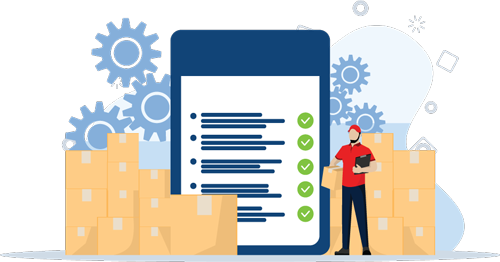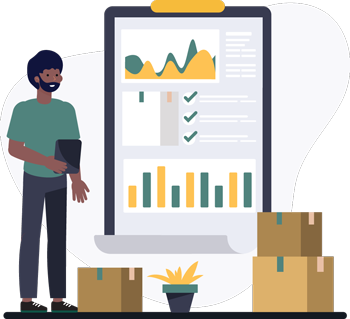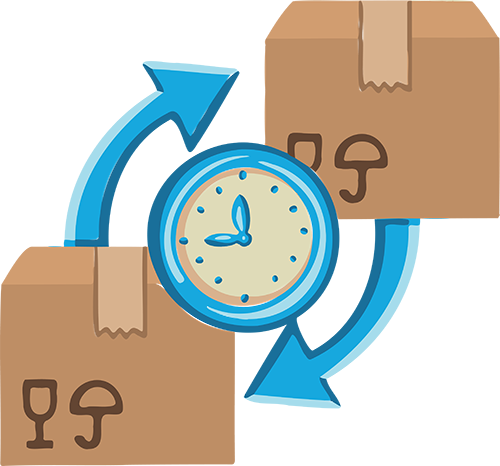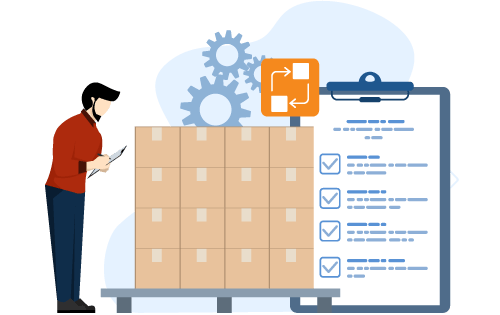Order and Inventory Management Questions and Answers
Built For

Order and Inventory Management Questions and Answers: Let’s Embark on a Learning Journey Together

In the era of digital transformation, the stakes are even higher. Customer expectations have evolved, demanding faster deliveries, real-time updates, and a seamless buying experience. Therefore, understanding the intricacies of order and inventory management has become beneficial and paramount.
Having worked closely with thousands of businesses from diverse sectors for decades, we’ve witnessed the challenges, dilemmas, and success stories firsthand. We understand the thirst for clarity and the need for tangible solutions.
Order and Inventory Management Questions and Answers: Dive Deep into the Core of Efficient Business Operations
As we dive deeper into this series, each article will not just provide answers but also context. The goal isn’t just to feed information but to enable a comprehensive understanding. Here’s a glimpse of what to expect:
What is inventory management?
What is inventory management? Inventory management is the process that monitors and manages the constant flow of goods in and out of a business, ensuring that the right products are available in the correct quantity at the right time.
What is inventory turnover rate?
The inventory turnover rate indicates the number of times a company’s stock is sold and replenished within a certain timeframe, typically annually, and is a crucial indicator of a company’s efficiency in managing inventory levels relative to consumer demand.

How do you calculate COGS?
To calculate the Cost of Goods Sold (COGS), sum up the beginning inventory cost plus purchases during the period, and subtract the ending inventory from this total.
What is QuickBooks integration?
QuickBooks integration allows businesses wanting to continue using QuickBooks for financial and payroll to gain the inventory, order management, and analytical features they need by seamlessly integrating inventory and order software with QuickBooks.
What is a reorder point?
A reorder point indicates when to replenish stock, helping prevent stockouts and overstocking. Grasping the concepts behind this critical inventory metric, its calculations, and its role in preventing stockouts and overstock situations is a central concept in inventory and procurement management.
How do you calculate average inventory?
The short answer is Average Inventory = (Beginning Inventory + Ending Inventory) / 2. But understanding the principles behind the How do you calculate average inventory? formula is crucial to grasping the importance of the calculation and applying it to your business.
What is EDI capable?
Electronic Data Interchange (EDI) capability has become synonymous with efficient business communication. Becoming EDI capable requires unraveling the intricacies of EDI, its role in automating transaction processes, enhancing B2B communication, and its significance in today’s fast-paced business environment.
What is a lot number?
Lot number tracking is a method of product traceability and recall processes. Understanding the difference between lot numbers and serial numbers, why lot numbers matter, and the technological solutions that simplify traceability is critical to uncovering why lot numbers matter more than you might think.
What is a BOM?
A BOM (Bill of Materials) details the quantities of parts, sub-assemblies, or components needed for the production of a product. The BOM is crucial in the manufacturing process and typically is in hierarchical form.
What is centralized inventory management software?
Centralized inventory management software allows businesses to manage inventory across multiple locations and orders from various sales channels, such as online marketplaces, e-commerce websites, EDI, and direct sales teams, by centralizing information within a single system.
And more…
- What is SKU rationalization?
- What is real-time inventory management?
- What is sell-through rate?
- What is forecasting analysis?
- What is an order processing system?
- What is a stock transfer?
- What is warehousing and distribution?
- What is dead inventory?
- Why is traceability important?
- What is obsolete inventory?
- How do you forecast inventory?
- What is landed cost?
- How can we consolidate orders?
- What is safety stock?
- How does inventory software work?
- What is picking and packing?
- What is inventory days on hand?
- How do I start barcoding my inventory?
- What is the goal of a good inventory system?
- Do I need small business inventory software?
- What is lot tracking software?
- What is order picking in a warehouse?
- What is multi-channel fulfillment?
- What is Economic Order Quantity (EOQ)?
- How do you improve order processing?
- What is EDI and how does it work?
- How do companies deal with product recall management?
- What are some tips for tracking inventory?
- How could EDI impact my business?
- What are the key features of inventory management system software?
- What is product assembly?
- What is barcode inventory system software?
- What is distribution management?
- What is sales order management?
- What is kitting and assembly?
- What is purchase order management?
- What are some objectives of handheld inventory tracking?
- What is an inventory cycle count?
- What is the order cycle?
Each topic comes to life with real-world examples, testimonials, and expert insights. Furthermore, our accompanying multimedia content, ranging from illustrative videos to detailed diagrams, will ensure an engaging and enriching experience.
Order and Inventory Management: Send us your questions

While we have a vast array of topics lined up, this series is as much about our readers as it is about our expertise. We encourage questions, comments, and suggestions. Perhaps there’s a pressing concern you want addressed. We’re all ears!
Stay tuned as we embark on this illuminating expedition, one question at a time, demystifying order and inventory management. Together, let’s build a community of well-informed, empowered businesses ready to tackle any challenge and seize every opportunity.
Call us at 817-870-1311




